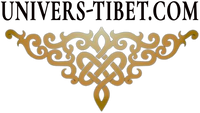
The Complete Guide to Tibetan Singing Bowls: Origin, Benefits, Use and Choice
of reading
Tibetan singing bowls fascinate with their captivating sound, profound mysticism, and resonant power. Rooted in the spiritual traditions of the Himalayas, they are now prized for meditation, relaxation, sound therapy, and energy balancing. This article aims to immerse you in their history, how they work, and their many uses to help you better understand them... and perhaps choose your own.
Origin and history of Tibetan singing bowls
Singing bowls originate in the Himalayan regions, primarily in Tibet, Nepal, India, and Bhutan. Their use dates back thousands of years, linked to shamanic practices and later incorporated into Tantric Buddhism.
Traditionally, they were handcrafted from an alloy of 7 sacred metals corresponding to the 7 classical planets: gold (Sun), silver (Moon), mercury (Mercury), copper (Venus), iron (Mars), tin (Jupiter), and lead (Saturn). This alloy gives the bowl its unique resonance and symbolic significance.
In Tibetan monasteries, monks use singing bowls to mark the stages of meditation, open rituals and harmonize the energies of the place.
Traditional Tibetan singing bowls are handcrafted from an alloy of 7 symbolic metals... (great for SEO).
How a Singing Bowl Works: Science and Vibration
When a Tibetan bowl is struck, it emits harmonic sound waves . These produce vibrations that propagate through the air but also through the water in the human body (which is more than 70% water).
These vibrations act on brain frequencies by stimulating alpha waves (light relaxation) and theta waves (deep meditation), as shown by research in sound therapy.
Researchers like Masaru Emoto have also shown that sounds can alter the structure of water, suggesting a real impact of sacred sounds on our cells.
The benefits of singing bowls
On the body : muscle relaxation, calming of the nervous system, improvement of sleep.
On the mind : mental clarity, grounding, concentration.
On energy : rebalancing of chakras, vibrational cleansing.
Bowls are also used in vibrational therapies : sound therapy, Reiki treatments, sound yoga sessions or sound massages.
Design tip: Include an infographic summarizing the benefits for your readers.
The different types of singing bowls
-
Hand hammered : complex resonance, handcrafted.
Industrially molded : simpler sounds, affordable prices.
Crystal bowls : pure and intense sound, high frequency.
Bowls engraved with mantras : Om Mani Padme Hum , Tibetan symbols or Flower of Life.
Some bowls are tuned to specific notes corresponding to the chakras:
Do (C) = root chakra
-
Re (D) = sacral chakra
Mi (E) = solar plexus chakra. .. etc.
Discover our artisanal collection of handmade Tibetan singing bowls
How to use a Tibetan singing bowl?
Two main techniques:
Make it sing by rubbing the wooden mallet on the rim of the bowl.
-
Strike lightly with the mallet to produce a clear sound.
You can use it:
At the beginning or end of meditation.
To purify a place or an object.
During a yoga or relaxation session.
Set a clear intention before each use. Recommended frequency: 1 to 2 times per day.
Choosing your singing bowl: our advice
Consider:
Size (small = high pitch / large = low pitch)
Weight (maneuverability)
The note (linked to the chakras)
The destination (meditation, care, decoration)
Take the time to listen to its sound if you can. Trust your intuition: the bowl should resonate with your energy.
Maintaining your Tibetan bowl
Clean it regularly with a soft cloth.
Avoid abrasive products.
-
Store it on a Tibetan cushion or in a sacred space.
Tibetan singing bowls and rituals
In Buddhist temples, singing bowls accompany:
The opening and closing of prayers.
Purification rituals.
Collective meditation.
They are often associated with Tibetan bells , dorje , incense and mantras to raise vibrations.
9. FAQ - Your most frequently asked questions
Which note should you choose for meditation? → Low notes (C, D) promote anchoring.
Can it be used every day? → Yes, it amplifies its positive effects.
What is the difference between a Tibetan bowl and a crystal bowl? → Crystal has a purer sound, the Tibetan bowl a more complex resonance.
Can I use it during pregnancy? → Yes, but at a reasonable distance and with soft sounds.
From what age? → From 6 years old with supervision.
Tibetan singing bowls are not just instruments: they are vibrational bridges between body, mind, and soul. Rooted in a thousand-year-old tradition, they have survived the ages to offer us a path to greater inner peace.
What if you listened to what your soul has to tell you... through vibrations?





